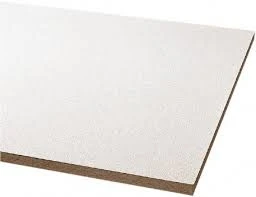- Afrikaans
- Albanian
- Amharic
- Arabic
- Armenian
- Azerbaijani
- Basque
- Belarusian
- Bengali
- Bosnian
- Bulgarian
- Catalan
- Cebuano
- Corsican
- Croatian
- Czech
- Danish
- Dutch
- English
- Esperanto
- Estonian
- French
- German
- Greek
- Hindi
- Indonesian
- irish
- Italian
- Japanese
- Korean
- Lao
- Malay
- Myanmar
- Norwegian
- Norwegian
- Polish
- Portuguese
- Romanian
- Russian
- Serbian
- Spanish
- Swedish
- Thai
- Turkish
- Ukrainian
- Uzbek
- Vietnamese
Aza . 08, 2024 11:57 Back to list
Understanding the Concept and Benefits of Grid Ceilings in Modern Architecture
What is a Grid Ceiling?
A grid ceiling, commonly referred to as a false ceiling or drop ceiling, is an architectural feature that consists of a grid framework suspended from the original ceiling structure. This framework is typically made of lightweight materials such as metal or plastic, and it supports panels that fill in the grid, creating a smooth, clean appearance. The grid ceiling system is widely used in commercial, industrial, and sometimes residential spaces for various practical and aesthetic purposes.
One of the primary advantages of a grid ceiling is its ability to conceal mechanical, electrical, and plumbing systems that may run above the original ceiling. This can include ductwork, wiring, and piping, which, if left exposed, could detract from the overall aesthetics of a space or complicate maintenance. By installing a grid ceiling, these elements can be hidden from view, allowing for a more visually appealing environment.
What is a Grid Ceiling?
In terms of insulation, grid ceilings can aid in the thermal performance of a building. The space between the original ceiling and the grid can be utilized to add insulation, helping to maintain a consistent temperature inside. In climates that experience extreme temperatures, this can significantly enhance energy efficiency, leading to reduced heating and cooling costs.
what is a grid ceiling

Moreover, grid ceilings offer flexibility in design and functionality. They can be customized with various styles, colors, and materials to suit the specific needs and aesthetics of a space. For instance, different types of ceiling tiles are available, including those that are visually appealing, moisture-resistant, or fire-retardant. This versatility allows architects and interior designers to choose the right components that align with the building’s purpose and design ethos.
Grid ceilings can also facilitate easy access to the infrastructure above. If maintenance or repairs are necessary, ceiling tiles can be removed without significant disruption to the overall ceiling structure. This easy access can prove invaluable in environments where regular maintenance is necessary, enhancing the longevity and functionality of the systems hid behind the ceiling.
There are different installation methods for grid ceilings, including the conventional method that involves attaching the grid to wall brackets or using a self-supporting system. The choice of installation depends on the specific requirements of the space, the weight of the ceiling tiles, and any other elements that may need to be supported from above.
However, it is essential to consider potential drawbacks. Grid ceilings can sometimes reduce the height of a room, which may not be ideal in spaces that require open, airy environments. Additionally, if installed improperly, grid ceilings could sag or warp over time, detracting from their aesthetic appeal and functionality.
In conclusion, a grid ceiling serves multiple purposes, blending aesthetic appeal with practical functionality. Its ability to conceal infrastructure, enhance acoustics, provide insulation, and allow for design flexibility makes it an increasingly popular choice for various types of buildings. Whether used in an office, school, healthcare facility, or home, grid ceilings can improve both the look and feel of a space, proving to be a valuable investment for property owners and designers alike. As architectural trends evolve, the grid ceiling will likely continue to play a significant role in contemporary interior designs.
-
Transform Interiors with PVC Gypsum Ceiling: A Stylish, Durable, and Moisture-Resistant SolutionNewsMay.19,2025
-
The Smart Interior Upgrade: Discover the Durability and Versatility of Gypsum Ceiling Access Panel SolutionsNewsMay.19,2025
-
The Smart Choice for Interior Design: Discover the Value of PVC Gypsum Ceiling SolutionsNewsMay.19,2025
-
Mineral Fiber Ceiling Tiles: The Smart Blend of Performance and AestheticsNewsMay.19,2025
-
Mineral Fiber Ceiling Tiles: The Superior Choice Over Gypsum for Sound and Fire SafetyNewsMay.19,2025
-
Mineral Fiber Ceiling Tiles: Eco-Friendly Strength and Style for Every CeilingNewsMay.19,2025







